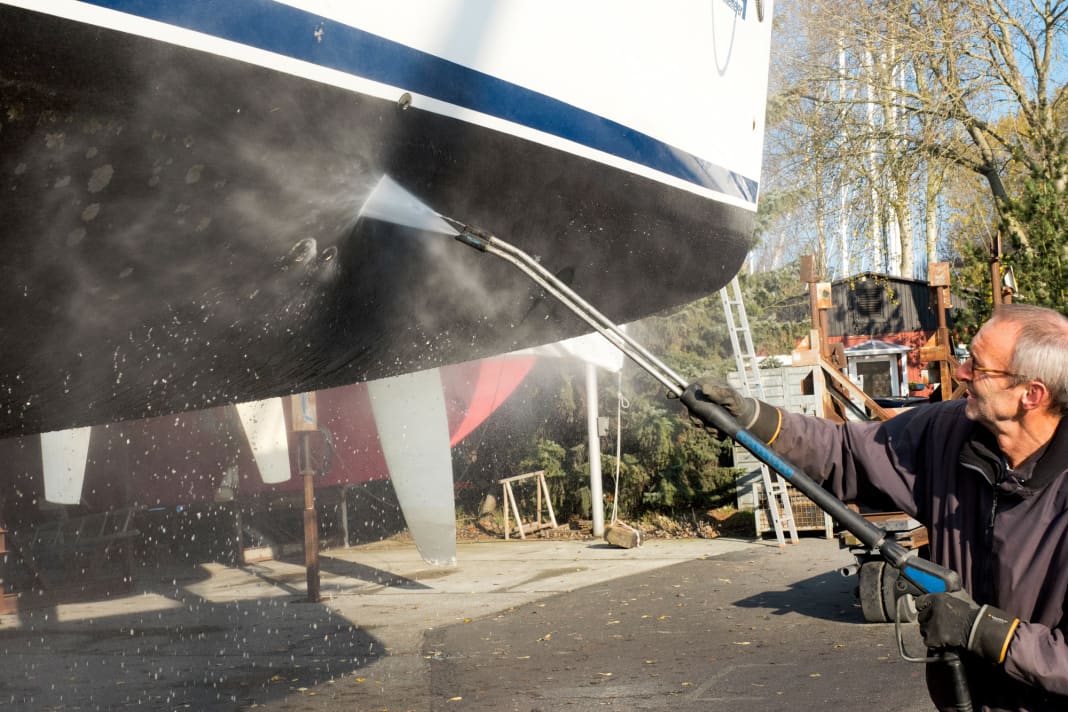





In this article:
DIY tub for the big wash
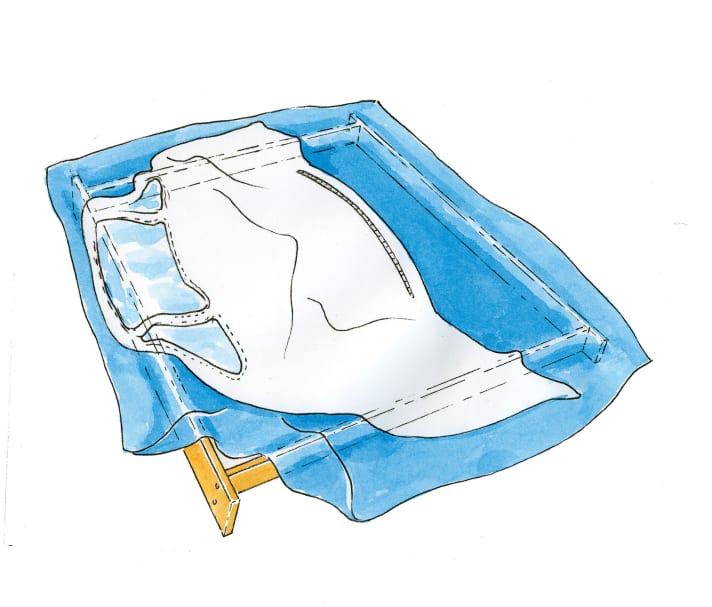
Textiles such as a tarpaulin, sprayhood or cake stand are difficult to clean as there is not enough space even in the bathtub. It's easier with our makeshift pool made from a tarpaulin and four slats. The timbers are screwed together to form a frame that matches the largest tarpaulin, and the tarpaulin is laid over them to create a flat tub. After cleaning, one of the slats is removed and the water drains away on its own. This means that even large and bulky parts can be soaked and cleaned very easily.
Günter Holstein, Cologne
Teak deck cleaning
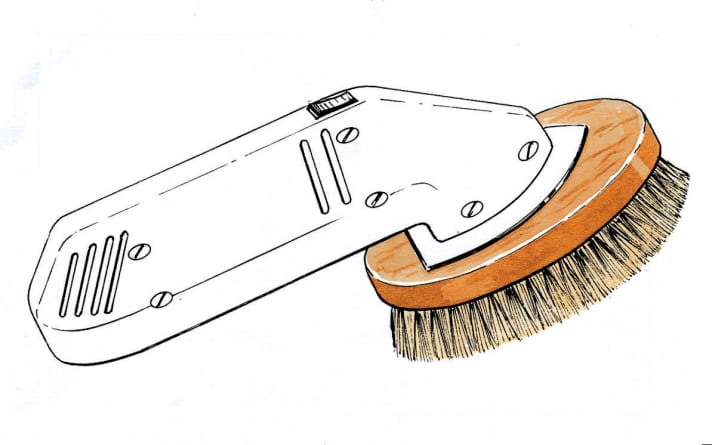
Although the high-pressure cleaner can remove even deep-seated dirt, it damages the wood fibres of the teak. Daily washing with a hard scrubbing brush is also not recommended.
The gentlest method is an occasional "massage" with a soft brush across the fibre. To do this, we screwed one of the mounting plates of our cordless delta sander onto the back of the brush. The brown broth produced during use proves the efficiency of our electric brush.
Heinz Lorenz, Ampfing
Cleaning the underwater hull
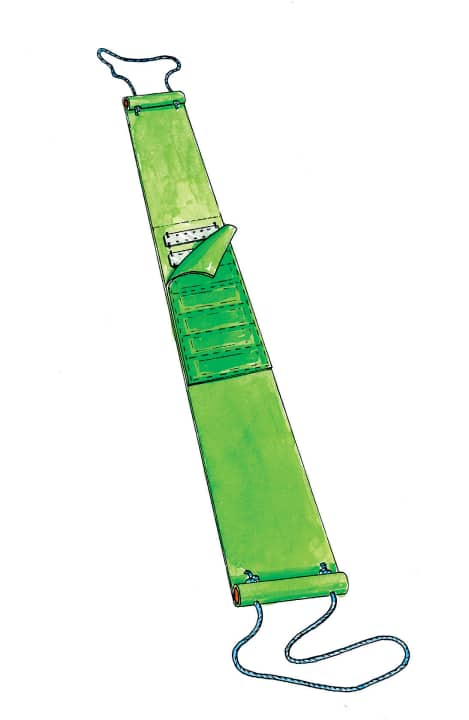
To clean the underwater hull during the season, we use a four metre long piece of grass carpet. We attached grip lines to the ends using two round timbers. We use stainless steel plates as weights so that you can get through underneath the rudder and saildrive - the grass carpet floats after all.
We had the tarpaulin maker sew a short piece of carpet onto the long strip so that the metal plates are completely enclosed and cannot damage the underwater hull.
Peter Haecky, Therwil/Switzerland
Clean forestay
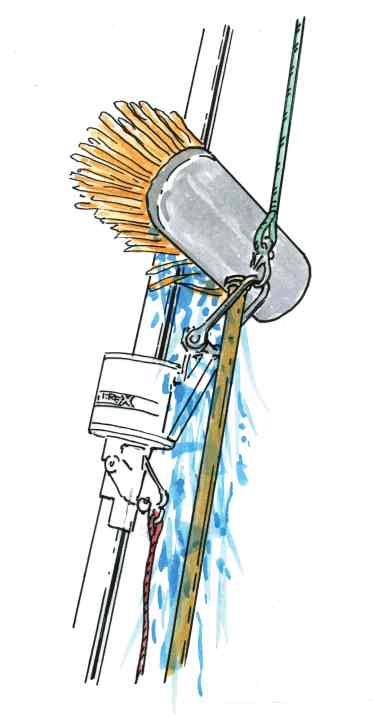
When the mast is lowered at the end of the season and the boat is made ready for winter storage, cleaning the rig is also on the work list.
Dirt can accumulate in the groove of the forestay profile in particular. If this is not removed, the luff can be soiled the next time the headsail is struck. However, as we don't lay the mast in winter, this otherwise quite simple task is somewhat more difficult. That's why we have built a forestay washing system using simple means. The halyard is attached to the furler with a large shackle. The shackle must be large enough to allow the handle of the deck scrubber to be inserted through it. A hose can be connected to the handle to supply the scrubber with water. Do not forget a safety line downwards so that the scrubber does not get caught in the mast stop. Now the construction can be moved up and down the profile and the dirt is washed away.
Janni Maraner, Bolzano
Fresh water for the engine

At the end of the season, the seawater cooling circuit needs to be flushed with fresh water. We do this on land. To do this, we create a temporary connection between the fresh water tank and the engine's cooling circuit. This consists of two permanently installed drain valves with cover caps from the installation supplies and a hose section with suitable threaded connections. They are each looped in with a T-piece in the suction line of the fresh water system and in the suction line of the sea water pump. The cooling water seacock must be closed, the engine is started and the seawater pump flushes the cooling system with tank water. We then insert the hose into a can of antifreeze. The hose is then removed.
Brigitte Lange, Kiel
Clean the inspection window of the fresh water tank
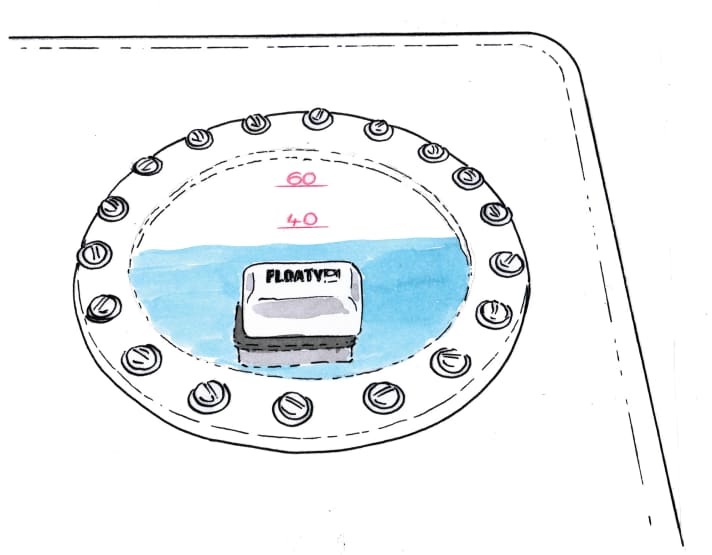
The fill level indicator in our fresh water tank consists of markings on the inside wall of the tank. This makes it easy to read the amount of water through the Plexiglas maintenance hatch - at least as long as the glass is not steamed up. In this case, a magnetic cleaning sponge for aquariums helps us. The sponge on the inside is held and moved by the magnet in the handle on the outside. This way we always have the necessary view.
Carsten Dubois, Elchingen
Tidy corners
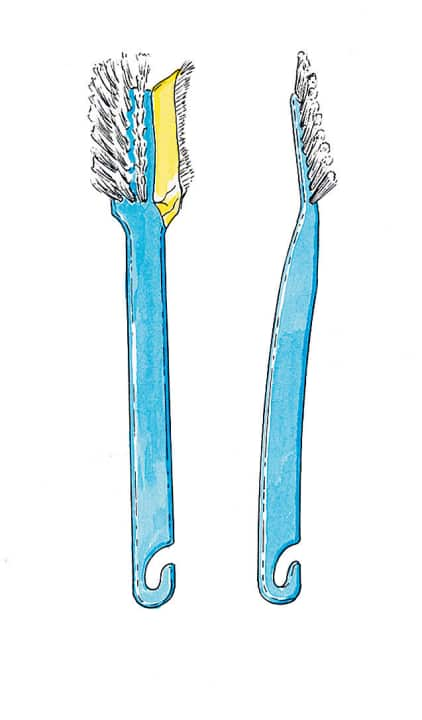
When washing a boat, there are always some corners that can't be reached with either a scrubbing brush or a hand brush. We bought a dishwashing brush with bristles that are not too hard. We glued the outer rows of bristles together as shown in the picture and sawed them off. The result is a practical cleaning aid for inaccessible areas.
Peter Haecky, Therwil/Switzerland
Remove dirt from the anchor chain

Anyone who frequently anchors on muddy ground will be familiar with the problem: the iron goes into the ground willingly and holds reliably, but the next morning the chain is usually completely dirty and difficult to clean with a brush and scrubbing brush. We have therefore screwed two scrubbing brushes to a broom handle with the bristles pointing towards each other. When we catch up, we simply run the chain through the brushes. The result is impressive.
Edgar Wohlheben, by e-mail

